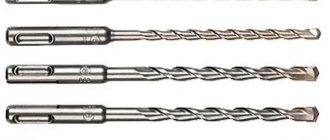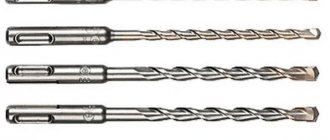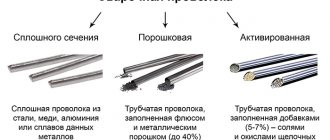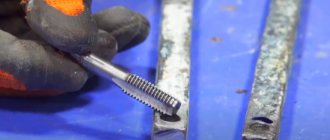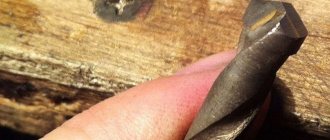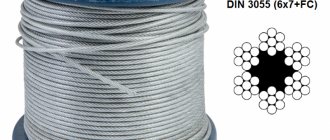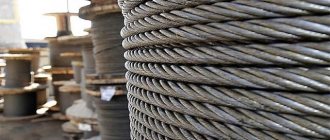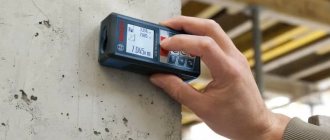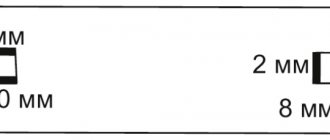Home craftsmen, radio amateurs and electricians periodically use a soldering iron to repair electrical appliances, desolder radio components from circuit boards and connect sections of LED strips. It is very important to take the choice of hand tools seriously so that working with them is as convenient and efficient as possible.
For home use it is not necessary to buy expensive professional soldering irons
The design of the soldering iron and the principle of its operation
Every radio amateur and home DIYer knows what a soldering iron looks like. However, when choosing a hand tool, it is important to familiarize yourself in detail with its design, and also take into account that the devices differ in power. The main design elements of the device are:
- holder;
- sting;
- cord;
- a heating element.
A hand tool has the ability to convert electrical energy into heat, which in turn is transferred to the soldering zone. The tip is the working part of the device. It can heat up to 400-450 °C. The hot tip, when exposed to the surface being treated, contributes to the melting of the solder and the parts being connected. As the molten substance hardens, the elements being processed are fixed.
Soldering irons differ in the type of power supply. Battery and network devices are on sale. The latter must be connected to the mains.
For reference! Cordless soldering irons are convenient to use for periodic tasks, since the battery charge is limited.
Standalone devices
In addition to the types listed above, mention should be made of autonomous type devices, that is, those that can operate without being connected to an electrical outlet, these include:
- a gas soldering iron in which the tip is heated by the flame generated by the combustion of gas. In essence, this is an ordinary gas burner, which uses nozzles for soldering;
Gas type soldering device
- battery-powered soldering irons;
Mini soldering iron with independent power supply
Types of soldering irons for home
There are many types of soldering irons that can be used at home. Below you can familiarize yourself with the features of each variety, which will make it possible to decide which hand tool to give preference to.
Nichrome soldering iron
This device is equipped with a nichrome spiral that passes electric current. The hand tool maintains and controls the heating process of the tip using a temperature sensor, which sends a signal to promptly turn off the coil if the maximum permissible temperature is exceeded.
Budget models are equipped with a nichrome alloy spiral wound around an insulating body. There is a rod inside to which the temperature is transferred. In expensive models, the alloy is built directly into the elements of the device, which helps reduce heat loss.
Among the main advantages of nichrome soldering irons it is worth highlighting:
- ease of use;
- mechanical stability;
- affordable price.
Prolonged heating of the device is considered the main disadvantage of this type of instrument. Nichrome models are suitable for craftsmen who do not use a soldering iron every day. It is reliable, but it will take a long time to warm up.
Nichrome heating element can be placed inside a white insulator
Ceramic soldering iron
This type of design is equipped with a rod-shaped ceramic heating element. The voltage applied to the contacts creates heat. Ceramic soldering irons have a wide temperature and power range and high heating speed. Additional benefits of ceramic hand tools include:
- possibility of intensive use without overheating;
- long service life.
The only drawback of the device is the low level of impact resistance of the ceramic rod.
Pulse soldering iron
When working with a pulse device, you must constantly hold down the power button. The tip heats up in a couple of seconds. After the button is turned off, the handpiece will begin to cool.
Copper wires are included in an electrical circuit. The presence of a transformer in the circuit helps reduce the network voltage to the operating level. Modern models allow you to adjust the power level and temperature.
Important! The main advantage of pulsed devices is fast heating and the ability to work with any parts. Soldering with this device is very easy.
Induction soldering iron
The induction coil, which soldering irons of this category are equipped with, helps to heat the rod. The tip is made of ferromagnet. When a certain temperature is reached, this coating does not induce a field, which prevents the core from heating up. When the heating level decreases, the tip re-introduces the field, which helps to continue heating. The temperature is constantly maintained, despite the absence of a sensor.
Among the main advantages of induction devices, it is worth highlighting:
- rapid heating of the tip;
- automatic temperature support.
An induction tool is perfect for home DIYers.
Having become familiar with what types of soldering irons there are, every master or just a radio amateur will be able to choose the most suitable option for himself.
If there is a need to use a soldering iron in the country or in another remote place, you should give preference to the wireless option
Wireless soldering iron
The portable soldering tool can be used anywhere. With such a device, the master will be freed from the problem of finding extension cords, which arises in cases of insufficient cable length. However, it is worth considering that a portable device is not capable of providing long-lasting powerful heating.
Using rechargeable batteries allows you to work with a soldering iron for no more than 60-80 minutes. The main advantages of a cordless tool are the ability to:
- rapid heating of the tip;
- working in a remote location where there are no outlets or electricity.
The disadvantages of this type of tool can be considered a short time of use and a low level of power. Continuous heating will quickly drain the batteries and make it impossible to work.
Portable USB Soldering Irons
Small devices can be powered via a USB port (from a laptop, car cigarette lighter). They are convenient to use for soldering small parts. The cost of the device is low, so anyone can purchase it. The main advantages of a mobile soldering iron are:
- small sizes;
- rapid heating of the tip.
The only drawback of these models is low power.
Having studied the types of soldering irons in detail, you can understand which tool is best to purchase for home use.
Top 8. SHHONG S2-4
Rating (2021): 4.75
1794 reviews taken into account from resources: AliExpress
The most complete set In the kit with this soldering iron you can order additional tips, flux, stand, sponge, case and even a multimeter.
- Characteristics
Price: 1190.54 rub.
- Power: 60W
- Output temperature: 200-450°C
- Blade material: copper/stainless steel
- Temperature adjustment: yes
A soldering iron with a ceramic core that provides fast heating and cooling and also helps save energy. In addition, the model maintains a stable temperature, which is important for precise work. The seller offers several sets to choose from. The extended package includes additional tips, a multimeter, flux, a stand, a sponge and a convenient case for storage and carrying. The power cord is soft and comfortable. It also has an on/off button. Another important advantage is fast delivery from AliExpress. But buyers have complaints about the packaging: the product is wrapped in just one layer of bubble wrap.
Advantages and disadvantages
- Extended equipment
- Ceramic core
- Fast delivery
- Weak packaging
Buy on AliExpress.com
Which soldering iron is better: pulse or regular?
The pulse type of the device can be assembled by any radio amateur with his own hands. Parts for such a device can be found on the radio market. The IP (pulse soldering iron) works only while the button is pressed, which makes it possible to avoid wasting electricity. Quick cooling of the tip eliminates the possibility of accidental burns.
If necessary, the master can independently replace the burnt-out tip. To do this, you just need to bend the copper wire and insert it into the clamps of the clamp. The only disadvantage of the IP is the weight of the device, which affects hand fatigue in case of prolonged operation.
Important! Working with an IP is much more convenient than with an ordinary soldering iron. The tip heats up faster, and even a novice radio amateur can replace the tip in the event of a breakdown.
This cannot be done in a regular soldering iron, since in them the functions of the tip are performed by a rod tip, which is manufactured in the factory. For a pulse device, the tip can be made of copper wires.
The pulse soldering device resembles a gun in appearance
Top 5. LDKGJJS Soldering Iron
Rating (2021): 4.85
513 reviews taken into account from resources: AliExpress
The best option for working in a car This soldering iron works from a cigarette lighter or alligator clips.
- Characteristics
Price: 647.03 rub.
- Power: 60W
- Output temperature: 200-430°C
- Blade material: n/a
- Temperature adjustment: no
Cheap portable soldering iron from AliExpress, which is great for working in the car. You can choose from a model with a power cord from the cigarette lighter or with alligator clips. If desired, the wire can be disconnected, which buyers consider a big plus. The device heats up in 1-2 minutes: this is not the best indicator in our review, but compared to old Soviet devices it is not bad. LDKGJJS Soldering Iron is well suited for soldering radio components and microcircuits, since the tip is sharp. It is made of stainless steel, which provides short circuit protection. Judging by the reviews, tin sticks to the tip easily. To avoid slipping in your hands, there is a silicone pad on the body.
Advantages and disadvantages
- Low price
- Suitable for car use
- Anti-slip silicone pad
- Takes a long time to heat up
Buy on AliExpress.com
Soldering iron selection criteria
To purchase a good soldering iron, it is important to choose the tool wisely. Below you can find the main criteria that are important to pay attention to when purchasing a soldering device.
Power
When choosing a soldering iron, it is important to pay attention to its power level. Devices available for sale are:
- From 3 to 10 W. This tool is recommended to be used only for working with small microcircuits. It's easy and convenient to work with.
- From 30 to 40 W. The soldering iron is suitable for those involved in repairing household appliances and radio amateurs. This power is enough to perform basic tasks.
- From 60 to 100 W. This option allows you to solder thick wires. The device is quite bulky. It is often purchased by car electrical repair technicians.
- From 100 to 250 W. The most powerful tool that makes it possible to seal pans, radiators, pipes and other metal objects. Working with a bulky structure is not so easy. It is extremely important to follow safety precautions. Only the correct use of such devices will be the key to successful soldering.
When choosing a good soldering iron for your home, you should think about what specific purposes it will be used for and, based on this, look at the number of watts.
Soldering irons from Czech manufacturers are of good quality
Temperature regulator
When buying a hand tool, it is important to pay attention to the presence of a built-in temperature regulator, because overheating often causes damage. The manufacturer integrates the regulator into a separate housing or directly into the design of the device.
Shape of the tip
The manufacturer uses tips made of ceramic, copper, nickel and aluminum in the manufacturing process of soldering irons. The most convenient to use tips are made of copper, which can be easily cleaned. The shape of the sting can also be varied:
- needle;
- cone;
- wedge.
Experts recommend giving preference to models with replaceable tips.
Handle material
When considering different types of soldering irons, it is worth paying attention to the handle of the device. It must be made from a material with a low level of thermal conductivity. Cheap models are equipped with plastic holders, which can melt if overheated.
Important! It is best to give preference to a tool with a wooden or ebonite handle.
After familiarizing yourself with the basic criteria for choosing a device, everyone will be able to decide which soldering iron to choose for soldering radio components. It is better to find out in advance what characteristics are needed and select a device based on possible tasks.
Top 7. Lefavor Soldering Iron
Rating (2021): 4.80
2311 reviews taken into account from resources: AliExpress
- Characteristics
Price: 317.43 rub.
- Power: 60/80W
- Output temperature: 200-450°C
- Blade material: stainless steel
- Temperature adjustment: yes
A very cheap soldering iron from AliExpress with a modern type of heating - a ceramic core. In the description, the manufacturer indicated that the model is suitable for working with radio components. This is true, because the tip is sharp, so you don’t have to worry about touching the adjacent wire of the microcircuit. In addition, the tip is made of stainless steel, which provides protection against short circuits and scale formation. There are various sets available to choose from: just a soldering iron, a set with a sponge and flux, as well as additional attachments. In reviews, buyers write that the model is excellent for home use and minor repairs, especially for such a low price. The only thing is that sometimes there are defects.
Advantages and disadvantages
- Low price
- Various sets to choose from
- Sharp sting
- High percentage of defects
Buy on AliExpress.com
Which soldering iron to choose for soldering wires, microcircuits and radio components
Soldering iron for microcircuits: which one should beginners and experts in the field of radio electronics choose? First of all, it is worth considering that high temperatures can cause the board to burn out.
Experts recommend giving preference to models whose power does not exceed 10 W. With them it will be easy and convenient to solder wires, microcircuits and radio components. The device must be equipped with a built-in thermostat.
The nichrome device is not sensitive to mechanical damage
Price overview
To summarize, let's consider the price level in various localities of the Russian Federation and the CIS for the 40-watt model of the ZD-200C soldering iron.
| Locality | $ | Locality | $ |
| Moscow | 6,00 | St. Petersburg | 6,00 |
| Donetsk | 6,50 | Kazan | 6,40 |
| Minsk | 6,20 | Odessa | 6,20 |
| Kharkiv | 6,10 | Vladivostok | 6,35 |
The table shows that the price of a soldering iron for microcircuits in Russia is practically no different from its cost in Minsk, Kharkov or Odessa.
Electrical insulating part
To prevent the nichrome thread and other contacts from shorting, we need to prepare a special insulating mixture. For this we need talc and silicate glue. Add talc to the silicate glue and mix gradually, we need to achieve the consistency of liquid sour cream.
Stage 1 of creation
You need to put a copper tube on the metal base of the soldering iron. A layer of 1 millimeter of insulating mixture is applied on top of the tube. Now you need to tightly wind 30 cm of 0.2 mm nichrome thread. Pull the remaining ends to the sides to connect power later.
Stage 2 of creation
Now apply a layer of insulating mass over the created winding of their nichrome thread. Take a wooden handle and drill a hole, it should be larger in diameter than our heating element.
Then lubricate the hole with talc glue and insert the heating part. After this, the soldering iron is sent to dry in a warm place for 12 hours.
All that remains is to install 2 batteries on the case and connect all our parts. First, install the batteries and connect the wiring from the batteries to the switch.
From it we already connect to one end of the nichrome wire, after which we connect the other end to another power contact.
Such a soldering iron can work on batteries alone for 2 hours, and this is a pretty good result. This soldering iron is quite simple and, if necessary, you can repair the soldering iron yourself, which is a big plus. We think you found the article interesting and wish you success with your build!
Homemade micro-soldering iron made from a resistor
Before you begin assembling your homemade product, you need to prepare the following materials and tools:
- resistor with a resistance of 51 Ohms and a power of 2 W;
- a piece of wooden block;
- two insulated pieces of copper wire;
- 24 volt adapter.
Soldering iron assembly steps:
- The resistance leads are cleaned. One of them is left 1 cm long, which will be the sting. The second lead must be at least 1.5 cm long.
- The end of one of the wires is stripped of insulation and a loop is made. It is fixed to the front end of the resistor.
- Then, retreating 50 mm, make a second loop, which is fixed with a screw on a wooden batten.
- The second wire is soldered to the long resistance terminal.
- The wires are connected to the adapter sockets.
- The micro-soldering iron tip is heated to the melting temperature of lead-tin solder.
- Soldering is done by holding a wooden block with your hand, which acts as a handle.
MP from a resistor
Additional Information. Radio technicians do not recommend using Chinese-made resistors. Their terminals are made of steel and are only covered with a thin layer of copper, which leads to their rapid burnout.
Whether to choose a ready-made micro-soldering iron or to make one yourself, the radio technician decides for himself based on the characteristics of the tool he needs.
User manual
There are often nuances in work that need to be corrected. The main points will be discussed below.
Soldering chips
When operating microcircuits and chips, it is necessary, first of all, to exclude the possibility of overheating of the chip. To do this, you need to touch each of its contacts for no more than three seconds. After this, the contact must be cooled and only then can the soldering process be carried out again.
Before soldering, the chip contacts are prepared and processed by applying a thin layer of solder to them, which will improve contact with the surface. Flux is applied to the legs of the element and a tip with solder is passed over them. If the procedure is carried out correctly, the contact will be shiny and smooth, without various accumulations of solder.
Various types of microcircuits
Pin chips
If the chip has leads in the form of pins, then the process of soldering it into the board occurs as follows:
- The microcircuit is installed in special holes in the surface of the board.
- On the opposite (back) side, flux is applied to the pin contacts.
- Each pin is soldered on the same reverse side.
- Remains of flux are removed.
Pin chip
Soic chips
Chips of this type are soldered slightly differently. This method is most often called "solder wave". Its essence is that molten solder in a liquid state fills the space between the metallized part of the board and the contacts of the part. This creates a drop that is capable of conducting electrical impulses.
The solder wave method is performed in the following few steps:
- Tin and moisten with flux all surfaces that will provide contact.
- Place the microcircuit on the surface of the board so that all the legs are aligned with the metallized tracks.
- To begin with, you need to solder only one corner contact.
- Next, the second contact is soldered, located diagonally in relation to the first. In this case, you need to make sure that all other contacts remain on their metal tracks.
- Next, flux is applied to all soldered and free ends of the microcircuit.
- Next, using the tip, the solder is evenly distributed over the contacts.
- If solder bridges form between the contacts, you must remove them, as the jumpers will interfere with the operation of the components. Removal occurs using a special metal braid. To do this, place it on top of the jumper and pass it with the tip of a soldering iron. In this case, the solder is absorbed into the braid.
Important! When performing soldering using the “wave solder” method, there must be a sufficient amount of flux at the places where soldering is carried out directly to ensure wetting of the surfaces.
You might be interested in Socket with a timer: instructions for use and principle of operation
Soic chips
Dismantling microcircuits
Planar chips are desoldered from the board using the following algorithm:
- Using acetone and ethyl alcohol, remove the varnish from the contacts completely.
- Flux is poured onto all contacts that will be soldered.
- Close all contacts using solder, accelerating it with a heated tip. The applied solder must remain liquid.
- Then you need to run the sting over all contacts, melting all the solder.
- Remove the chip.
